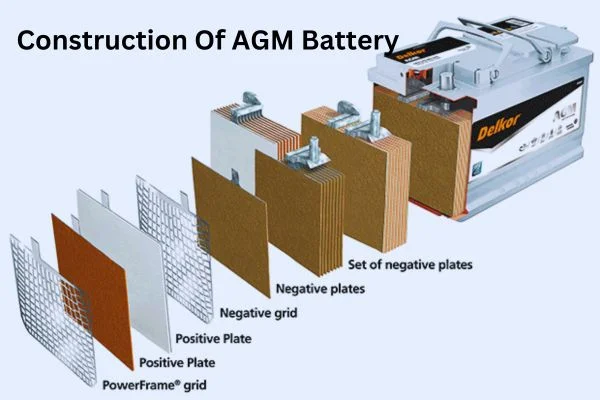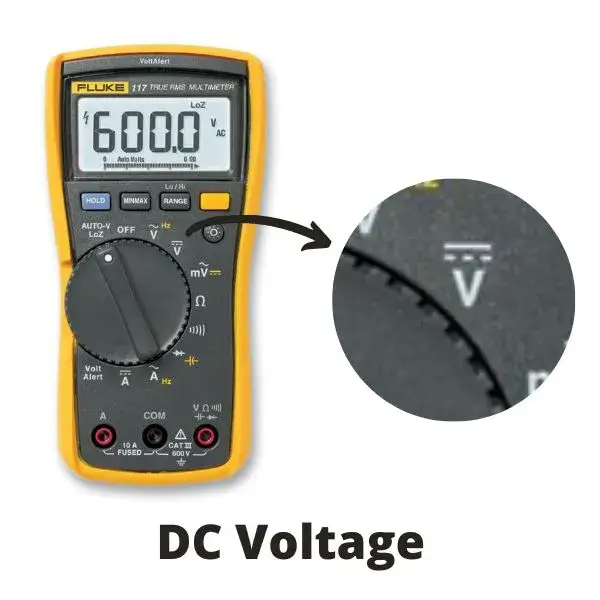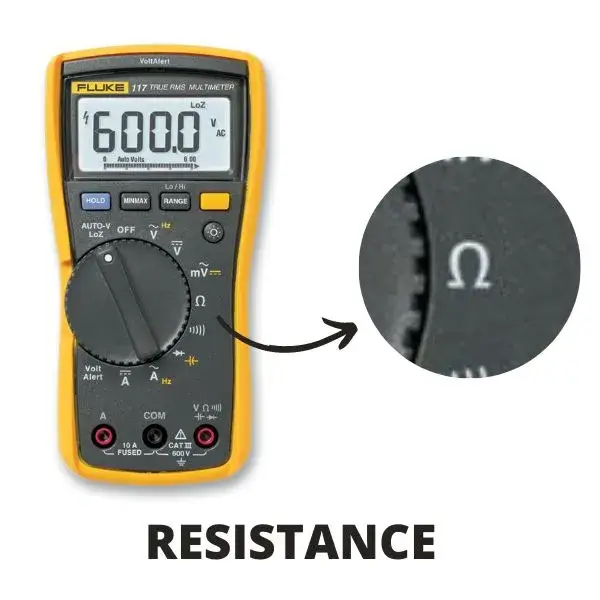Hello there! If you’re reading this blog, then chances are you’re wondering how to test AGM battery with multimeter. Well, you’re in luck because in this blog, I’m going to walk you through the entire process step-by-step of testing your AGM battery and ensure it’s functioning optimally.
Why is it called AGM?
Before we begin, let’s briefly discuss what an AGM battery is. AGM stands for “Absorbed Glass Mat” and is a type of lead-acid battery. Unlike traditional lead-acid batteries, AGM batteries have a mat of glass fibers between the plates that absorbs the electrolyte, making them spill-proof, maintenance-free, and able to withstand deep discharges.

AGM batteries are commonly used in high-performance vehicles, such as motorcycles, boats, and RVs, and require periodic testing to ensure they’re functioning correctly.
Now, let’s get started with the testing process!
Tools Needed for Testing
Before you begin testing your AGM battery, you’ll need the following tools:

A multimeter: A multimeter is a handheld device that measures voltage, current, and resistance. You’ll need this tool to test the voltage, charge, and resistance of your AGM battery.
Safety gear: Safety should always be a top priority when handling batteries. You should wear rubber gloves, safety goggles, and protective clothing to protect yourself from acid and chemical exposure.
Pre-Testing Preparations For AGM Battery
Before you begin testing your AGM battery, it’s essential to take some safety precautions and prepare the battery for testing. Here’s what you should do:

- Turn off the engine and remove the key from the ignition.
- Disconnect the negative cable from the battery first, then the positive cable.
- Clean the battery terminals with a wire brush to remove any corrosion or buildup.
- Check the electrolyte level and top up with distilled water if necessary.



How to test AGM battery with multimeter? | 4 Methods
Method 1 | Testing the Specific Gravity of the Electrolyte
How to test AGM battery with multimeter? To accurately assess the specific gravity of the electrolyte in an AGM battery, you will need to use a hydrometer instead of a multimeter. The specific gravity measurement provides valuable information about the state of charge and the overall health of the battery. Follow the step-by-step guide below to test the specific gravity of an AGM battery using a hydrometer:
Step 1: Gather the necessary tools and materials
Before you begin the testing process, ensure that you have the following items ready:A hydrometer: A hydrometer is a device used to measure the specific gravity of a liquid. It typically consists of a glass tube with a calibrated float and a rubber bulb on top for drawing the electrolyte into the tube. Distilled water: You may need distilled water to adjust the specific gravity of the electrolyte if necessary.Safety gear: As always, prioritize safety by wearing rubber gloves, safety goggles, and protective clothing to protect yourself from acid and chemical exposure.
Distilled water: You may need distilled water to adjust the specific gravity of the electrolyte if necessary.Safety gear: As always, prioritize safety by wearing rubber gloves, safety goggles, and protective clothing to protect yourself from acid and chemical exposure.Step 2: Prepare the battery
To prepare the AGM battery for specific gravity testing, follow these steps:Turn off the engine and remove the key from the ignition.Disconnect the negative cable from the battery first, then the positive cable.Step 3: Access the electrolyte
 AGM batteries are sealed, so you will need to locate the vent caps on top of the battery. These caps provide access to the individual cells and the electrolyte within. Carefully remove the vent caps using a suitable tool or as per the battery manufacturer’s instructions.
AGM batteries are sealed, so you will need to locate the vent caps on top of the battery. These caps provide access to the individual cells and the electrolyte within. Carefully remove the vent caps using a suitable tool or as per the battery manufacturer’s instructions.Step 4: Extract the electrolyte
Using the hydrometer, extract a small amount of electrolyte from each cell of the battery. Squeeze the rubber bulb at the top of the hydrometer to draw the electrolyte into the glass tube. Repeat this process for each cell, being careful not to cross-contaminate the electrolyte.Step 5: Test the specific gravity
Once you have extracted the electrolyte, follow these steps to measure its specific gravity using the hydrometer:- Hold the hydrometer upright and ensure that the float is free from any obstructions.
- Submerge the hydrometer’s float into the extracted electrolyte.
- Gently release the bulb to allow the float to stabilize.
- Take note of the specific gravity reading indicated by the float’s position on the hydrometer’s calibrated scale.
Step 6: Interpret the specific gravity reading
Compare the specific gravity reading obtained from the hydrometer to the battery manufacturer’s specifications or industry standards. Generally, a fully charged AGM battery should have a specific gravity reading between 1.270 and 1.300 at 77°F (25°C). Lower readings may indicate a discharged or weak battery, while higher readings might suggest an overcharged battery.Step 7: Adjust the electrolyte if necessary
If the specific gravity reading falls outside the recommended range, you may need to adjust the electrolyte. Use distilled water to lower the specific gravity or battery electrolyte additive to raise it, following the manufacturer’s instructions carefully. Add small amounts of the necessary component and retest the specific gravity until it falls within the desired range.Step 8: Reassemble and reconnect the battery
After testing the specific gravity of the AGM battery and making any necessary adjustments, reassemble the battery by replacing the vent caps securely. Reconnect the positive cable first and then the negative cable, ensuring proper tightening of the terminals.Remember, testing the specific gravity of an AGM battery with a hydrometer provides valuable insights into its state of charge and health. However, it’s essential to consult the battery manufacturer’s manual or seek guidance from a qualified mechanicMethod 2 | Testing the Voltage
Testing the voltage of an AGM battery is a straightforward process that involves using a multimeter. Here’s how to do it:

- Set your multimeter to the DC volts setting and ensure it’s set to the appropriate range for the battery voltage (usually 20 volts).
- Connect the red multimeter lead to the positive battery terminal and the black multimeter lead to the negative battery terminal.
- Read the voltage on the multimeter. A fully charged AGM battery should read between 12.8 and 13.2 volts. If the voltage is below 12.4 volts, the battery may be discharged, and you’ll need to charge it before testing again.
Method 3 | Testing the Charge
Testing the charge of an AGM battery involves measuring the specific gravity of the electrolyte using a hydrometer. However, since AGM batteries are sealed, you’ll need to use a multimeter to measure the voltage drop during a load test. Here’s how to do it:
- Set your multimeter to the DC volts setting and ensure it’s set to the appropriate range for the battery voltage (usually 20 volts).
- Connect the red multimeter lead to the positive battery terminal and the black multimeter lead to the negative battery terminal.
- Start the engine and let it idle for a few minutes to ensure the battery is fully charged.
- Turn on the headlights and radio to create a load on the battery.
- Read the voltage on the multimeter. If the voltage drops below 12.4 volts, the battery may be weak, and you’ll need to charge it or replace it.
Method 4 | Testing the Resistance
Testing the resistance of an AGM battery involves measuring the internal resistance of the battery using a multimeter. Here’s how to do it:

1. Set your multimeter to the ohms setting and ensure it’s set to the appropriate range (usually 200 ohms).
2. Connect the red multimeter lead to the positive battery terminal and the black multimeter lead to the negative battery terminal.
3. Read the resistance on the multimeter. A healthy AGM battery should have a resistance of less than 10 milliohms. If the resistance is higher, the battery may be damaged, and you’ll need to replace it.
Tips and Tricks
Here are some additional tips and tricks to help you test your AGM battery with a multimeter:
- Always use a multimeter with a higher voltage rating than the battery voltage.
- Test your battery regularly, ideally every three months, to ensure it’s functioning optimally.
- Charge your battery fully before testing to get accurate readings.
- If you’re unsure about any of the testing procedures, consult the battery manufacturer’s manual or a qualified mechanic.
- Replace your battery if it’s more than three years old, shows signs of physical damage, or fails any of the testing procedures.
In conclusion, testing an AGM battery with a multimeter is a simple yet crucial process that can help you prolong the life of your battery and prevent any potential breakdowns. By following the steps outlined in this blog and taking safety precautions, you can confidently test your AGM battery and ensure it’s functioning optimally.
Conclusion
Congratulations, you’ve successfully tested your AGM battery with a multimeter! Regularly testing your battery is crucial to ensure it’s functioning optimally and to prevent any potential breakdowns. Remember to always take safety precautions when handling batteries and to wear appropriate safety gear. You can also use a voltage tester to check if a battery is dead or alive. Hope you know how to test AGM battery with multimeter?
FAQs-Frequently Asked Questions
Q: Can I test my AGM battery without disconnecting it?
A: It’s not recommended to test your AGM battery without disconnecting it first, as this can be dangerous and cause short circuits.
Q: What if my AGM battery fails the voltage test?
A: If your AGM battery fails the voltage test, it may not be holding a charge, and you’ll need to recharge it or replace it.
Q: What if my AGM battery fails the load test?
A: If your AGM battery fails the load test, it may not be able to deliver enough power to start your vehicle, and you’ll need to recharge it or replace it.
Q: What if my AGM battery fails the resistance test?
A: If your AGM battery fails the resistance test, it may be damaged, and you’ll need to replace it.

